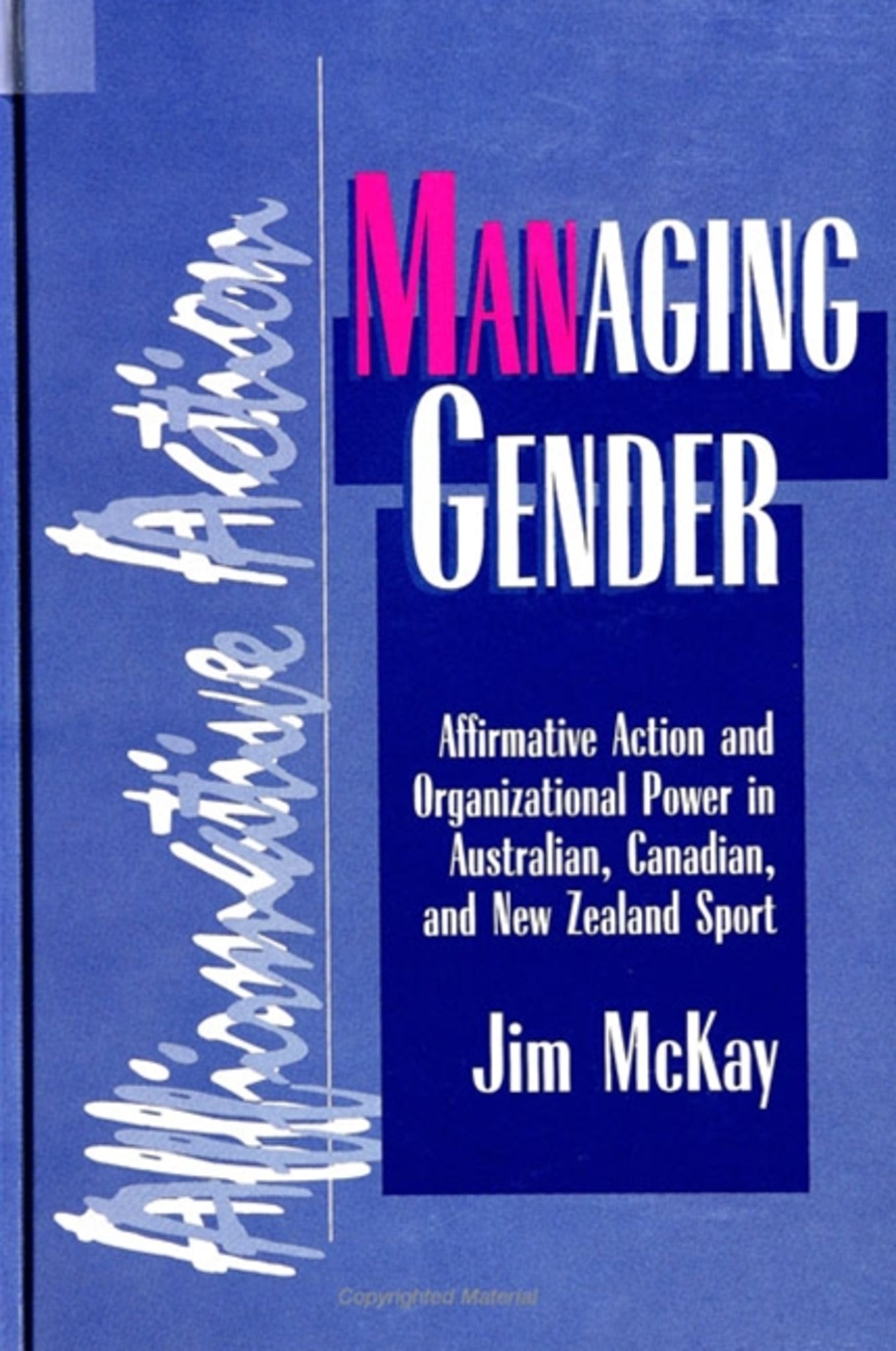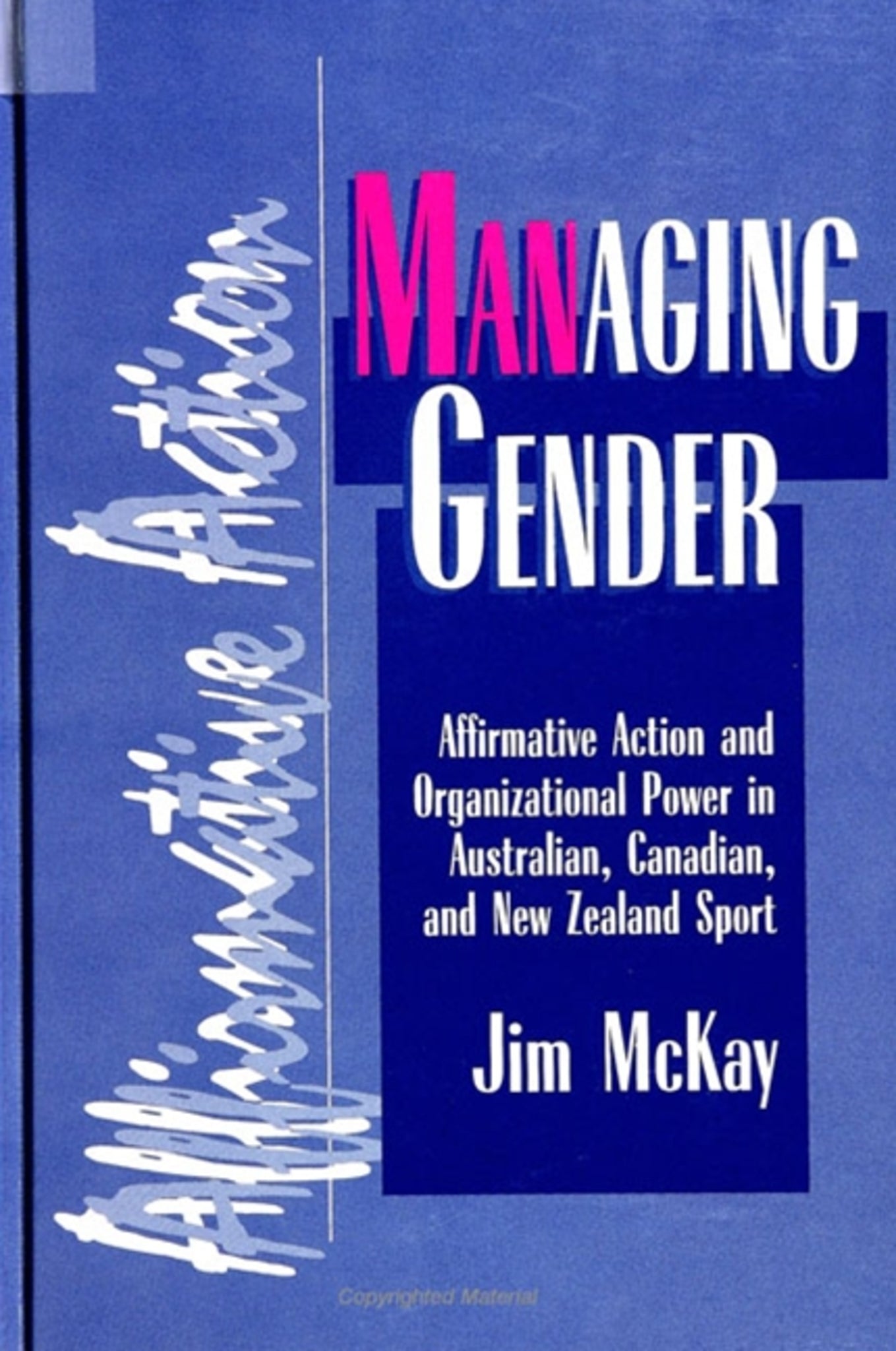We're sorry. An error has occurred
Please cancel or retry.
Managing Gender

Some error occured while loading the Quick View. Please close the Quick View and try reloading the page.
Couldn't load pickup availability
- Format:
-
24 July 1997

Evaluates the implementation of affirmative action programs for women in Australian, Canadian, and New Zealand sporting organizations.
This analysis of gender, sexuality, and power in sport evaluates how affirmative action programs for women have been implemented in sporting organizations in Australia, Canada, and New Zealand. Based on in-depth interviews with over one hundred men and women managers and supported by colorful examples from the popular press, Managing Gender shows that affirmative action initiatives usually have been marginalized, trivialized, or incorporated into the corporate-managerial and masculinist cultures that pervade sporting organizations, the media, and the state.


"The book has tremendous breadth and is theoretically bold … Its relevance and significance for affirmative action studies on race and gender relations in organizations within and outside the United States is profound." — Gender & Society
"Managing Gender will add significantly to the ever-increasing literature in the area of 'gender and sport,' most of which emanates from the United States and, therefore, focuses primarily on American culture. It will be a valuable addition as well to the sport management and organizational analysis literature that has not paid serious enough attention to gender or to the increasing scholarship on feminist organizations and feminist theoretical discussions of organizational analysis theory." — Ann Hall, author of Feminism and Sporting Bodies: Essays on Theory and Practice
"McKay is probably the most visible and significant scholar doing this kind of work in Australia today. He builds a case for a sociological analysis of sports as a gendered institution by looking at different sites of its organization and deployment. McKay's analysis is sharp and the stories interesting." — Michael Kimmel, State University of New York at Stony Brook
"This book provides a useful and timely example of the ways in which legislated equity initiatives can be resisted, subverted, and coopted not only by those whose power and privilege are threatened (in this case, most men) but also by some women. The extensive excerpts from the interviews provide graphic evidence of the extent of the problem." — Helen Jefferson Lenskyj, University of Toronto, author of Out of Bounds: Women, Sport and Sexuality and Women, Sport and Physical Activity
List of Tables
Preface
Acknowledgments
List of Abbreviations
1. Introduction
"The Search for Mr. Right"
Profeminist Research
Profeminist Research and Sport
Summary
2. Theoretical Framework
Thinking Institutionally about Gender and Organizations
Gender and Social Constructionism
Gendered Structures of Labor, Power, and Cathexis
Implications for Gender and Sport
Summary
3. The Corporate-Managerial State, Gender, and Sport
The Rise of the Corporate-Managerial State
Affirmative Action in The Corporate-Managerial State
Implications for Affirmative Action in Sport
Summary
4. Structures of Labor, Power, and Cathexis
Methods
Structures of Labor
Structures of Power
Structures of Cathexis
Summary
5. "Doing" Affirmative Action
Affirmative Action Opponents
Affirmative Action Skeptics and Cynics
Affirmative Action Advocates
Organizations that Make Affirmative Action Work
Summary
6. The Write Stuff? Media Representations of Affirmative Action in Australian Sport
The Mass Media and the Social Construction of Gender
Sports Journalism and "Groupthink"
The "Paranoia of the Powerful"
Summary
7. Hegemonic Masculinity and the Gender Politics of Affirmative Action Policy Research
Intellectual Work and Cultural Policy
Background to the Report
The Commission's Response to the Report
"Talking to the ISAs" Or "Dialogue with the Deaf"
Summary
8. One Cheer for Affirmative Action
The Limits of Affirmative Action
Changing Organizational Cultures
Changing Men
Changing Sport
Who and What Is Changing Whom?
Summary
Appendix 1: Organizational Affiliations of Interviewees
Appendix 2: Questionnaire on the Status of Women Sport Executives
Appendix 3: Quantitative Summaries of Australian Respondents' Perceptions of Their Organizations
Bibliography
Subject Index
Name Index



